2020 Intern Cohort
On this page:
Tearina Asiata
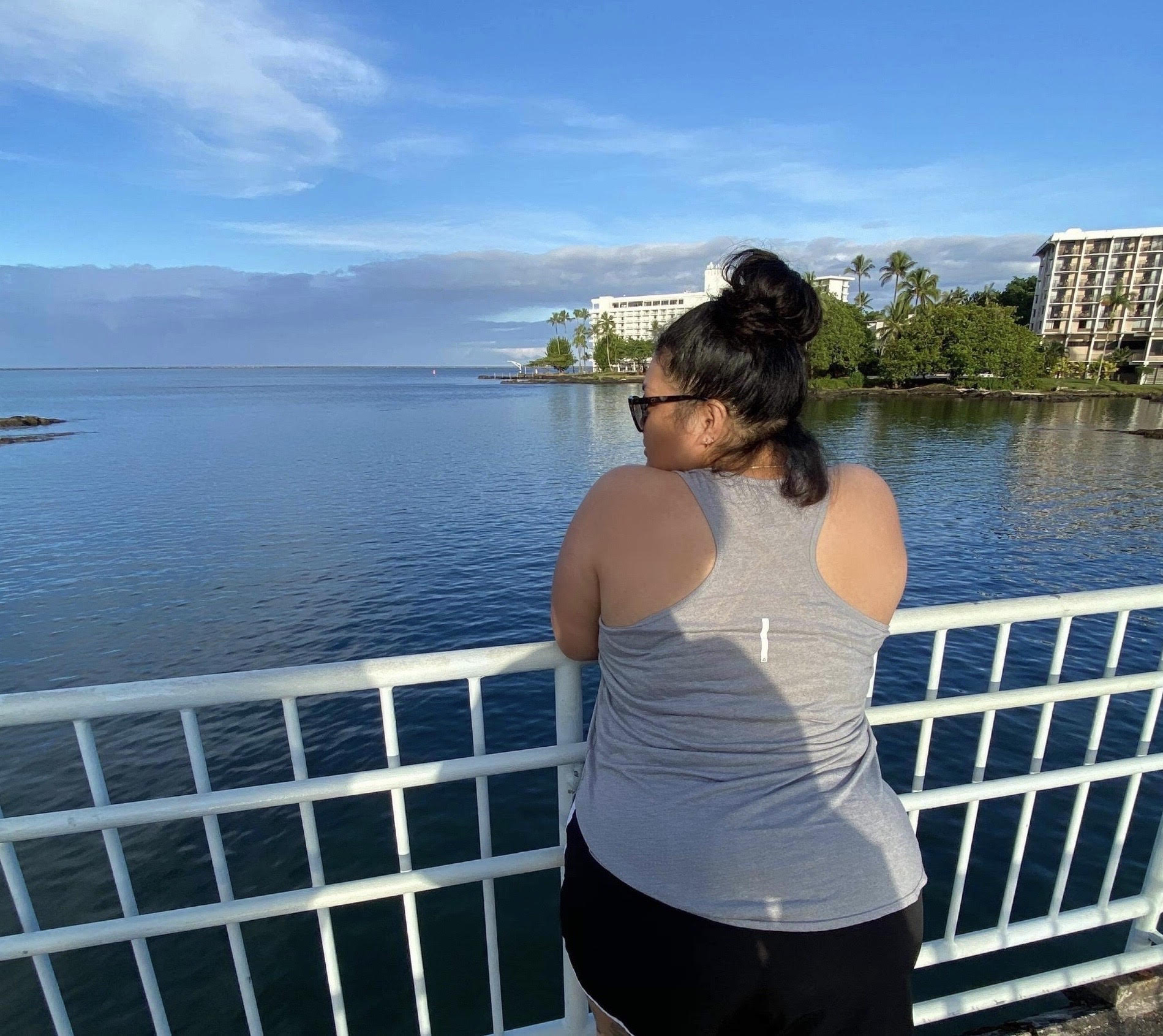 Tearina Asiata
Tearina is from American Samoa, and her internship is with the American Samoa Department of Health. When asked for a fun fact about her work, Tearina said, "Did you know that only female mosquitoes bite and that your blood aids mosquito reproduction by providing the protein that mosquito eggs require to develop?". Her proposed study aimed at exploring the validity of the assumption made towards climate change and its prospective influence on the increased prevalence of mosquito-borne diseases on Tutuila Island in American Samoa. However, the study was difficult to accomplish due to a variety of circumstances such as the global pandemic, restricted resources, and the total time expected to complete it. As a result, she directed her attention more towards the epidemiology of mosquito-borne diseases, among other things. She was responsible for constructing and updating information sheets and case investigation forms for notifiable diseases that occurred within the territory. She was also able to observe the American Samoa Environmental Protection Agency's efforts to monitor water sources accessible to the residents of American Samoa, including both recreational and drinking water sources. She also participated in the host agency's campaign to suppress the spread of lymphatic filariasis through an island-wide mass drug administration. Her favorite part of her internship experience was returning home after a two-year absence to learn about the latest scientific advances, particularly in the field of public health. She also found it incredible to witness firsthand the efforts made by the government and host agency to keep the COVID-19 virus from penetrating the territory for as long as possible. Aside from meeting specific internship objectives during the pandemic, the most challenging task for her was analyzing data from the most recent lymphatic filariasis mass drug administration.
Tearina Asiata
Tearina is from American Samoa, and her internship is with the American Samoa Department of Health. When asked for a fun fact about her work, Tearina said, "Did you know that only female mosquitoes bite and that your blood aids mosquito reproduction by providing the protein that mosquito eggs require to develop?". Her proposed study aimed at exploring the validity of the assumption made towards climate change and its prospective influence on the increased prevalence of mosquito-borne diseases on Tutuila Island in American Samoa. However, the study was difficult to accomplish due to a variety of circumstances such as the global pandemic, restricted resources, and the total time expected to complete it. As a result, she directed her attention more towards the epidemiology of mosquito-borne diseases, among other things. She was responsible for constructing and updating information sheets and case investigation forms for notifiable diseases that occurred within the territory. She was also able to observe the American Samoa Environmental Protection Agency's efforts to monitor water sources accessible to the residents of American Samoa, including both recreational and drinking water sources. She also participated in the host agency's campaign to suppress the spread of lymphatic filariasis through an island-wide mass drug administration. Her favorite part of her internship experience was returning home after a two-year absence to learn about the latest scientific advances, particularly in the field of public health. She also found it incredible to witness firsthand the efforts made by the government and host agency to keep the COVID-19 virus from penetrating the territory for as long as possible. Aside from meeting specific internship objectives during the pandemic, the most challenging task for her was analyzing data from the most recent lymphatic filariasis mass drug administration.
Jessica Glazner
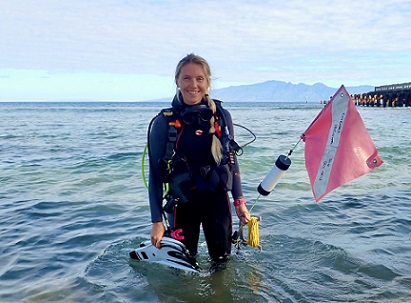 Jessica Glazner
Jessica (Fall 2020 cohort) is from Northern California. Jessica's internship is with The Nature Conservancy, Hawaiʻi Chapter, Palmyra Program. Palmyra Atoll's coral reefs have proven to be more resilient to thermal stress than other reefs throughout the Pacific. This is partially due to the natural nutrient subsidies coming to the reef via seabirds and apex predators. These nutrients boost plankton production, and the corals can feed on the plankton to survive through bleaching events when they lose their symbiotic algae. The goal of Jessica's internship project is to use what is known about Palmyra's resilient coral reef ecosystem to inform management actions that improve coral resilience to climate impacts in other areas that are not as resilient. Jessica will be designing an experiment to test if it is possible to simulate the natural nutrient inputs provided by seabirds and sharks at Palmyra, and if boosting plankton production could help sustain corals through a bleaching event. Jessica has enjoyed having the opportunity to work alongside the Palmyra team and other TNC staff, and she is inspired by the impact that their projects are having on conservation. The most challenging piece of her internship has been designing the experiment. However, Jessica has been incredibly lucky to have the support and guidance of many scientists in the field of coral reef biology.
Jessica Glazner
Jessica (Fall 2020 cohort) is from Northern California. Jessica's internship is with The Nature Conservancy, Hawaiʻi Chapter, Palmyra Program. Palmyra Atoll's coral reefs have proven to be more resilient to thermal stress than other reefs throughout the Pacific. This is partially due to the natural nutrient subsidies coming to the reef via seabirds and apex predators. These nutrients boost plankton production, and the corals can feed on the plankton to survive through bleaching events when they lose their symbiotic algae. The goal of Jessica's internship project is to use what is known about Palmyra's resilient coral reef ecosystem to inform management actions that improve coral resilience to climate impacts in other areas that are not as resilient. Jessica will be designing an experiment to test if it is possible to simulate the natural nutrient inputs provided by seabirds and sharks at Palmyra, and if boosting plankton production could help sustain corals through a bleaching event. Jessica has enjoyed having the opportunity to work alongside the Palmyra team and other TNC staff, and she is inspired by the impact that their projects are having on conservation. The most challenging piece of her internship has been designing the experiment. However, Jessica has been incredibly lucky to have the support and guidance of many scientists in the field of coral reef biology.
John Graves
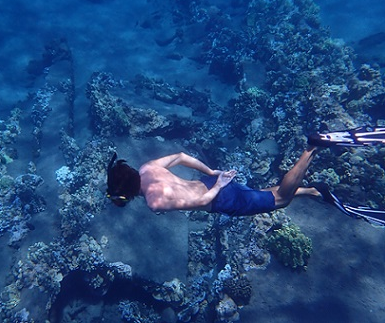 John Graves
John (Fall 2020 cohort) is from Austin, Texas. John's internship is with the Division of Aquatic Resources (DAR). John would like to let you know that yellow tang populations have rebounded by 400% since a moratorium on the aquarium trade went into effect approximately two years ago. John's responsabilities include participating in a range of activities and projects with DAR, including working on soil and marine sediment analysis, benthic species identification for CoralNet, and eventually conducting dive surveys. Favorite part of John's internship: getting to try on different hats in order to explore what the agency is doing in real time. The most challenging aspect of his internship is identifying coral in grainy photos (through digital methods).
John Graves
John (Fall 2020 cohort) is from Austin, Texas. John's internship is with the Division of Aquatic Resources (DAR). John would like to let you know that yellow tang populations have rebounded by 400% since a moratorium on the aquarium trade went into effect approximately two years ago. John's responsabilities include participating in a range of activities and projects with DAR, including working on soil and marine sediment analysis, benthic species identification for CoralNet, and eventually conducting dive surveys. Favorite part of John's internship: getting to try on different hats in order to explore what the agency is doing in real time. The most challenging aspect of his internship is identifying coral in grainy photos (through digital methods).
Aloha Kapono
Aloha Kapono
Aloha (Fall 2020 cohort) is from Hilo, Hawaiʻi. Aloha's internship is with the Spatial Data Analysis and Visualizations Laboratory (SDAV). The SDAV Lab is one of the leading Laboratories on Hawaiʻi Island that specializes in aerial information technologies. Aloha's research seeks to develop a report that quantifies historic shoreline change for coastal bluffs and shoreline areas along the Honoliʻi and Aliʻi Drive areas for the County of Hawaiʻi. Our primary goal is to work with the County of Hawaiʻi to build detailed images and maps that can be used to identify areas most at risk of sea-level rise and coastal erosion impacts. These datasets will be shared with the Hawaiʻi State GIS Program and hosted on their web portal for open public access. Aloha's has enjoyed learning and developing skillsets in aerial photo technology and remote sensing techniques. The most challenging aspect of her internship: always being consumed by the computer screen while watching gorgeous Hilo days pass by.
Lauren Kapono
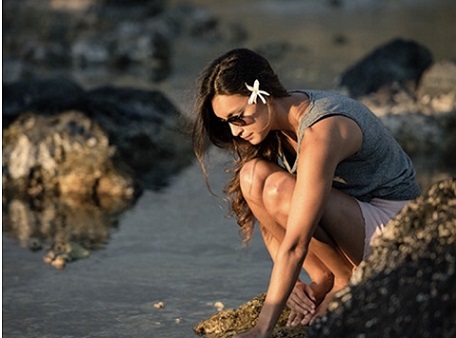 Lauren Kapono
Lauren (Fall 2020 cohort) is from Hilo, Hawaiʻi. Lauren's professional internship is with Nā Maka Onaona, MEGA lab, Arizona State University. For a fun fact about Lauren's agency, she asks, "Have you ever seen an ʻopihi run? If you put a predator snail next to its mantle, the ʻopihi will lift itself up and start to run away!". Lauren has the opportunity to work with the nonprofit organization Nā Maka Onaona on their newly developed ʻopihi method which plan to evaluate the productivity and carrying capacity of ʻopihi (Cellana spp.) with respect to their environment and biology. In partnership with the multi-scale environmental graphical analysis (MEGA) lab at UH Hilo and Arizona State University, they plan to create maps to help understand how sea-level rise may impact ʻopihi habitats. Some memorable moments of Lauren's internship thus far is being able to share space with some amazing ʻōiwi leaders such as Pelika Andrade, Dr. Haunani Kane, Aunty Leinaʻala Keakealani Lightner, and Kanoeʻulalani Morishige, just to name a few. This internship experience has allowed Lauren to work with many different professionals and learn about their expertises and what it takes for them to be amazing. Lauren is grateful to be able to see first hand what it takes to be a Hawaiʻi leader, what that means, and how to act accordingly. Challenges that have been consistent throughout this year have been due to COVID-19 restriction. There has been constant struggles to gather in groups, travel in university vehicles, attend conferences, and make sure that participants/volunteers are always safe and comfortable.
Lauren Kapono
Lauren (Fall 2020 cohort) is from Hilo, Hawaiʻi. Lauren's professional internship is with Nā Maka Onaona, MEGA lab, Arizona State University. For a fun fact about Lauren's agency, she asks, "Have you ever seen an ʻopihi run? If you put a predator snail next to its mantle, the ʻopihi will lift itself up and start to run away!". Lauren has the opportunity to work with the nonprofit organization Nā Maka Onaona on their newly developed ʻopihi method which plan to evaluate the productivity and carrying capacity of ʻopihi (Cellana spp.) with respect to their environment and biology. In partnership with the multi-scale environmental graphical analysis (MEGA) lab at UH Hilo and Arizona State University, they plan to create maps to help understand how sea-level rise may impact ʻopihi habitats. Some memorable moments of Lauren's internship thus far is being able to share space with some amazing ʻōiwi leaders such as Pelika Andrade, Dr. Haunani Kane, Aunty Leinaʻala Keakealani Lightner, and Kanoeʻulalani Morishige, just to name a few. This internship experience has allowed Lauren to work with many different professionals and learn about their expertises and what it takes for them to be amazing. Lauren is grateful to be able to see first hand what it takes to be a Hawaiʻi leader, what that means, and how to act accordingly. Challenges that have been consistent throughout this year have been due to COVID-19 restriction. There has been constant struggles to gather in groups, travel in university vehicles, attend conferences, and make sure that participants/volunteers are always safe and comfortable.
Kimsky Kubo
Kimsky Kubo
Kimsky (Fall 2020 cohort) is from Pohnpei, Micronesia. Kimsky's professional internship is with Mauna Kea Forest Restoration Project. Fun fact: "Mauna Kea Forest Restoration Project is now offering activities such as hiking, camping, and off-road riding around the Mauna while working at the same time". Kimsky has spent most of his internship hours on removing ungulates to protect the endangered Palila. Kimsky is also planting native species, managing ungulate fencing around the Mauna, and he looks forward to his field crew's camping trip this summer. The most challenging part of Kimsky's internship happened on the first day of work where he lost communication with the field crew while checking fence. Despite this initial obstacle, Kimsky recognized that "it's always good to make mistakes in order to learn and move on with a better directions".
Darrian Muraoka
Darrian Muraoka
Darrian (Fall 2020 cohort) is from Kekaha,Kauaʻi. Darrian's internship is with Waterkeeper Alliance: Waiwai Ola Waterkeepers Hawaiian Islands. Waterkeepers work to protect the ability of present and future generations to swim, fish, drink, and otherwise use and enjoy the waters that support the people and culture of Hawaiʻi. With Waterkeepers mission in obtaining swimmable, fishable, drinkable waters in Hawaiʻi, some activities that Darrian is currently involved in are water quality and turbidity testing in their sites within Hilo, Hawaiʻi. Darrian is also working on social media for Hilo Bay Waterkeeper to keep their followers informed (most of which are other Waterkeeper Chapters), and outreach and education for the Hilo community (with COVID-19 restrictions). Darrian's favorite part of the internship experience is learning the work that goes into a non-profit like waterkeepers. Darrian: "There is so much going on behind the scenes and I am just grateful that I get to learn it all via my mentor, the people we collaborate with, and the community we serve". The most challenging part of the professional internship experience was being forced to think outside the box for outreach and education and how to better serve the community, given today's COVID restrictions. Darrian is planning several activities such as a poster contest, radio PSAs for brown water advisiories, drone work to see the water flow from mauka to makai, and so much more.
Whitney Springer
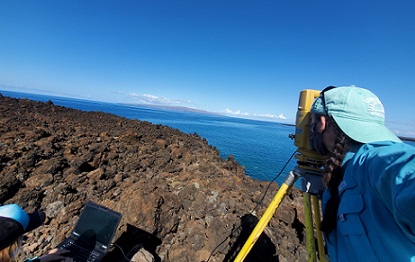 Whitney Springer
Whitney (Fall 2020 cohort) is from Utah. Whitney's internship is with thePacific Whale Foundation, Cascadia Research Collective, and the Department of Aquatic Resources Protected Species Program. Did you know: false killer whales are only called that because their skull shape looks like an orca skull. They are much smaller and don't actually resemble a killer whale at all. Whitney's internship focuses on human impacts on two cetacean species in Hawaiian waters, spinner dolphins and false killer whales. For Pacific Whale Foundation, her work is based in South Maui, conducting land based surveys to learn more about spinner dolphin habitat use in shallow resting bays and how their behavior may be impacted by human activities. For her work with Cascadia Research Collective and DAR's Protected Species Program, Whitney is involved in land based surveys scanning for false killer whales, as well as outreach efforts with local fishers on the northern side of Hawaiʻi Island in order to work together in finding solutions to reduce bycatch of the endangered insular population of false killer whales. Whitney has enjoyed connecting with the community and organizations that all want to be part of striving for ʻāina momona! The most challenging aspect of her internship: "I had leave my dog for a month while I went to Oahu for a month long technology learning program. While the program itself has been wonderfully informative and helpful, I look forward to being with my puppy again!"
Whitney Springer
Whitney (Fall 2020 cohort) is from Utah. Whitney's internship is with thePacific Whale Foundation, Cascadia Research Collective, and the Department of Aquatic Resources Protected Species Program. Did you know: false killer whales are only called that because their skull shape looks like an orca skull. They are much smaller and don't actually resemble a killer whale at all. Whitney's internship focuses on human impacts on two cetacean species in Hawaiian waters, spinner dolphins and false killer whales. For Pacific Whale Foundation, her work is based in South Maui, conducting land based surveys to learn more about spinner dolphin habitat use in shallow resting bays and how their behavior may be impacted by human activities. For her work with Cascadia Research Collective and DAR's Protected Species Program, Whitney is involved in land based surveys scanning for false killer whales, as well as outreach efforts with local fishers on the northern side of Hawaiʻi Island in order to work together in finding solutions to reduce bycatch of the endangered insular population of false killer whales. Whitney has enjoyed connecting with the community and organizations that all want to be part of striving for ʻāina momona! The most challenging aspect of her internship: "I had leave my dog for a month while I went to Oahu for a month long technology learning program. While the program itself has been wonderfully informative and helpful, I look forward to being with my puppy again!"
Kainalu Steward
 Kainalu Steward
Kainalu (Fall 2020 cohort) is from Lahaina, Maui. Kainalu's internship is with the Multi-Scale Environmental Graphical Analysis (MEGA) Lab. One fun fact about Lalo in Papahānaumokuākea is that over 90% of the threatened Hawaiian sea turtle population travel to Lalo for safe nesting. The main expected outcomes of this project are to better understand the resilience of Lalo to Sea level rise (SLR) and climate change impacts, with the goal of moving towards best management practices in the future. Through digitizing shorelines of Lalo, we will gain more insight of the movement of these sandy islands and how island stability is impacted by SLR and/or storm events. With many species who rely on these small atolls for habitat, such as nesting sea turtles, it will be crucial to observe and track shoreline change. Kainalu's favorite part of his internship is being able to learn more about our kūpuna islands within Papahānaumokuākea, while also exploring and sharpening his research skills such as digitizing shoreline imagery using ArcGIS. Kainalu is stoked and very humbled to be working and learning under another Native Hawaiian scientist, Dr. Haunani Kāne, as his mentor. The most challenging part of his internship is digitizing multiple monthly shoreline imagery of Lalo in a timely manner.
Kainalu Steward
Kainalu (Fall 2020 cohort) is from Lahaina, Maui. Kainalu's internship is with the Multi-Scale Environmental Graphical Analysis (MEGA) Lab. One fun fact about Lalo in Papahānaumokuākea is that over 90% of the threatened Hawaiian sea turtle population travel to Lalo for safe nesting. The main expected outcomes of this project are to better understand the resilience of Lalo to Sea level rise (SLR) and climate change impacts, with the goal of moving towards best management practices in the future. Through digitizing shorelines of Lalo, we will gain more insight of the movement of these sandy islands and how island stability is impacted by SLR and/or storm events. With many species who rely on these small atolls for habitat, such as nesting sea turtles, it will be crucial to observe and track shoreline change. Kainalu's favorite part of his internship is being able to learn more about our kūpuna islands within Papahānaumokuākea, while also exploring and sharpening his research skills such as digitizing shoreline imagery using ArcGIS. Kainalu is stoked and very humbled to be working and learning under another Native Hawaiian scientist, Dr. Haunani Kāne, as his mentor. The most challenging part of his internship is digitizing multiple monthly shoreline imagery of Lalo in a timely manner.
